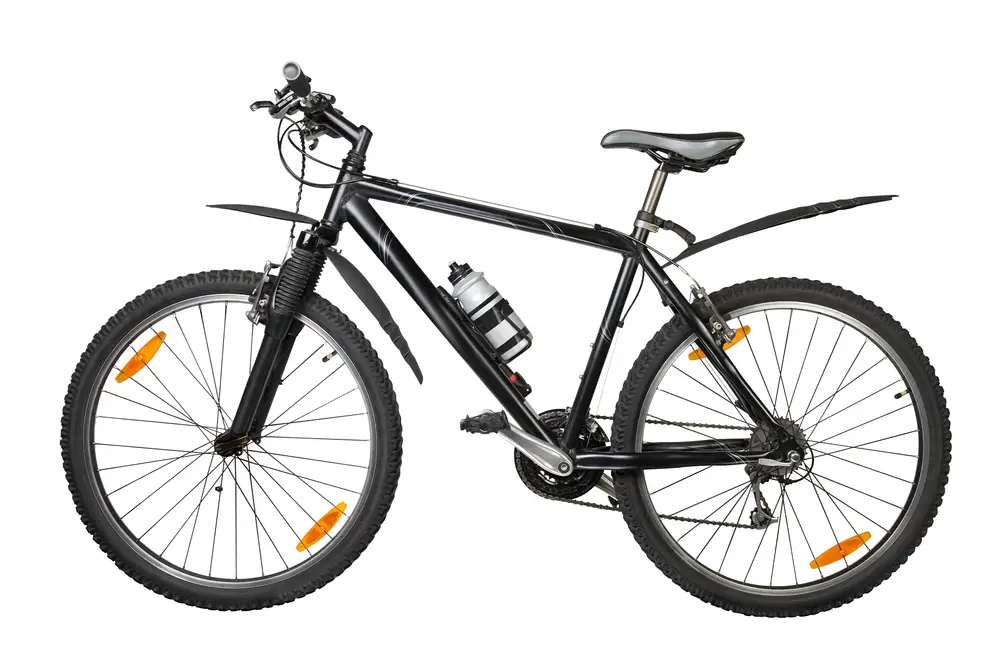Bike fenders are designed for the same purpose as car fenders: they prevent dirt, mud, rocks and other types of debris from being thrown up into the air. While on a car their primary purpose is to protect your paint job from being damaged, on a bike they also protect YOU from damage.
So if your bike doesn’t have a fender on it, should you buy one?
Bike fenders may not be necessary depending on the type of riding you do. If you’re a road cyclist or only ride smooth trails, you probably don’t need one. However, if you’re a mountain biker who is exposed to dirt and mud all day, a fender will help you and your bike stay clean and scuff-free.
If you’re on the fence about a fender, read on to learn their pros and cons, how much they typically cost, and how easy they are to install. Then you can determine if it’s worth it for you.
Purpose of Bike Fenders

A bike fender’s main purpose is to keep debris away from you and your bike. The rotation of your tires kicks up all sorts of dirt and gravel. This debris has a habit of finding its way up onto your clothes, and also your face. The latter is more of a problem. It’s hard to see where you’re going when your riding classes are covered in mud.
While we can all agree getting pelted in the face with mud and small rocks is less than ideal, bike fenders are also there to prevent damage to your bike.
Rocks can easily chip your frame’s paint, which given how expensive bikes are, can be incredibly frustrating. A bike fender can minimize the chances of this. However, dirt and mud can do even more harm. If debris works its way into your fork seals, this could prevent your fork from working properly and cause expensive internal damage.
When shopping for bike fenders, you’ll typically notice many designed for the front wheel and few designed for the rear. Why? When traveling forward, the front tire kicks up dirt and debris rearward into your bike. Since the rear tire does the same, there’s little chance that dirt and mud will affect you or your bike.
If you have riding buddies right behind you however, they might appreciate you buying a rear fender.
Pros / Cons of Bike Fenders
Pros
Bike fenders are all about protection. They keep debris from becoming flying projectiles seeking to attack your bike…and your face. While cosmetic dings and chips to your bike’s paint won’t affect your bike’s performance, a damaged fork or drivetrain certainly will. If these components aren’t functioning correctly, it could result in a crash and injury.
Not to mention expensive repairs or replacements of damaged components: something few people budget for, even though we all know we should!
Your eyes are pretty sensitive. Ask anyone who wears contact lenses (like myself) how painful it is when even the tiniest fuzz gets in there. Now imagine that fuzz is a splatter of mud or piece of gravel, and you’ll see why protecting them is important. A bike fender acts as a gatekeeper to prevent debris from getting to your face.
And if you don’t wear glasses or goggles when you ride, you should reconsider!
All of these benefits are pretty significant, and they can be had for a relatively low price. Bike fenders are inexpensive (we’ll cover prices a little later), so there’s no reason not to add one to your bike wish-list.
Unless of course the following cons are a deal-breaker…
Cons
Anything you add to your bike will also add weight. To some people, weight is a critical factor. It costs around $1,000 to remove a pound of weight from your bike (choosing lighter components, switching to a carbon frame etc.), so every ounce added to the bike needs to be carefully contemplated.
However, most fenders come in way under 100g (less than ¼ pound), so for those of us that aren’t concerned about weight, this won’t have a noticeable effect on your riding. But it’s still something to note.
Tire clearance is another important consideration. For those who ride a 29er or use wider or plus size tires, some burlier fenders may not offer enough clearance between the underside of the fender and the center knobs of the tire. If your bike fender is dragging on your tire, it’s going to inhibit your tire’s ability to spin freely…not ideal for maintaining momentum!
This last point I don’t agree with, but I’ve heard from several riders. Some people just think bike fenders look ugly. Why? I’m not sure, but everyone has their own aesthetic tastes, so take a look at a bunch of different bike fender styles before buying to see if you can find one that doesn’t assault your eyes too badly.
Do You Need Fenders for Your Bike?
Depending on the style of riding you do, a bike fender may not be necessary.
If you’re a road cyclist, commuter, or casual mountain biker who only frequents the most mellow, smooth trails, you don’t need to install a bike fender. It’s rare the terrain you’re riding on will have the type of debris that bike fenders protect against. A fender certainly won’t hurt, but it won’t get much use either.
If you’re a mountain biker who rides more challenging terrain or trails that are frequently wet, muddy or rocky, you should strongly consider installing a bike fender. It will protect your bike’s components from excessive wear and tear and help keep your face and riding glasses mud free.

Are Bike Fenders Worth It?
If you’ve determined the pros outweigh the cons, we’ll now take a look at two additional factors to consider before you buy a bike fender: cost and ease of installation.
Let’s start with cost. As bike components go, fenders are pretty cheap. Many great quality fenders are priced in the $20-30 range, like these options from Ground Keeper. They come in tons of cool designs, so you’re sure to find one that fits your style. Even more robust fenders can all be found for less than $50.
In terms of installation, mounting a bike fender is about as easy as it gets. More robust options usually come with specific mounting hardware, allowing you to attach the fender directly to your bike’s fork. With these fenders, be sure to check compatibility though: sometimes they are designed to only fit specific fork brands or models.
Less expensive fenders typically attach to the fork with zip-ties. This makes installation and removal easy. However, if you plan on removing your fender a lot, you’re better off using some velcro straps instead. This makes removal much quicker, and also makes the environmentally conscious people (like me) happier. Fewer zip-ties means less plastic waste!
All in all, this makes bike fenders cheap, easy to install components with the potential to protect you and your bike from more expensive damage. And personally, I think they look cool: why not choose a funky design or color to add a little personality to your bike?
Cheap Protection for Your Bike…and Yourself
A bike fender is one of the least expensive ways to prevent more expensive damage to your bike’s frame. Pair it with downtube and frame protector decals and your bike’s frame is well guarded against paint chips.
Since visibility is so important when biking, you’ll appreciate the mud staying where it belongs: on the trail, and not on your face.
So if you want to increase the longevity of your frame and components, keep yourself clean(er) when riding, and add a little bling to your bike, a bike fender is a great way to do all three!
